Owen Kimball
Overcoming Domain Mismatch in Low Resource Sequence-to-Sequence ASR Models using Hybrid Generated Pseudotranscripts
Jun 14, 2021
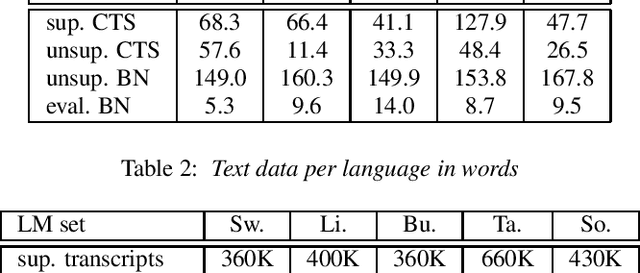

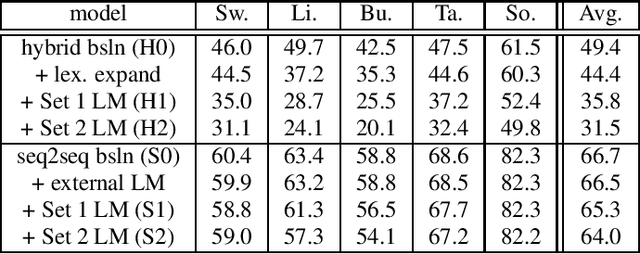
Abstract:Sequence-to-sequence (seq2seq) models are competitive with hybrid models for automatic speech recognition (ASR) tasks when large amounts of training data are available. However, data sparsity and domain adaptation are more problematic for seq2seq models than their hybrid counterparts. We examine corpora of five languages from the IARPA MATERIAL program where the transcribed data is conversational telephone speech (CTS) and evaluation data is broadcast news (BN). We show that there is a sizable initial gap in such a data condition between hybrid and seq2seq models, and the hybrid model is able to further improve through the use of additional language model (LM) data. We use an additional set of untranscribed data primarily in the BN domain for semisupervised training. In semisupervised training, a seed model trained on transcribed data generates hypothesized transcripts for unlabeled domain-matched data for further training. By using a hybrid model with an expanded language model for pseudotranscription, we are able to improve our seq2seq model from an average word error rate (WER) of 66.7% across all five languages to 29.0% WER. While this puts the seq2seq model at a competitive operating point, hybrid models are still able to use additional LM data to maintain an advantage.
Using heterogeneity in semi-supervised transcription hypotheses to improve code-switched speech recognition
Jun 14, 2021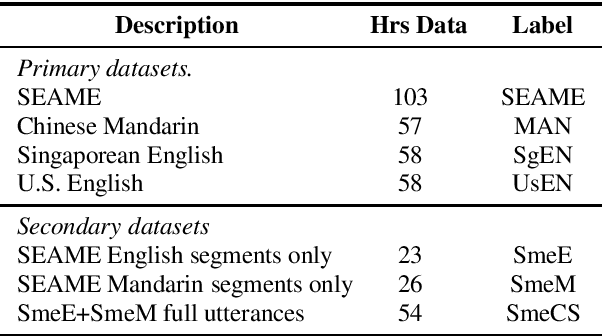

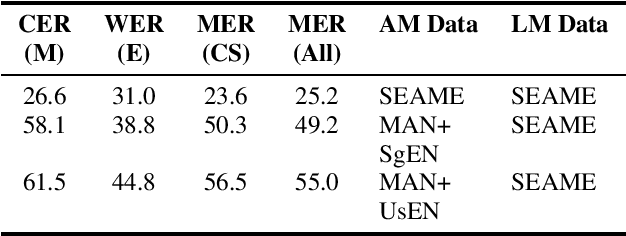
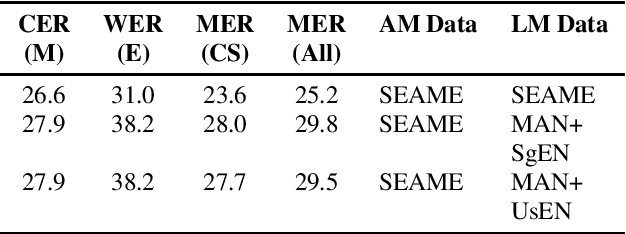
Abstract:Modeling code-switched speech is an important problem in automatic speech recognition (ASR). Labeled code-switched data are rare, so monolingual data are often used to model code-switched speech. These monolingual data may be more closely matched to one of the languages in the code-switch pair. We show that such asymmetry can bias prediction toward the better-matched language and degrade overall model performance. To address this issue, we propose a semi-supervised approach for code-switched ASR. We consider the case of English-Mandarin code-switching, and the problem of using monolingual data to build bilingual "transcription models'' for annotation of unlabeled code-switched data. We first build multiple transcription models so that their individual predictions are variously biased toward either English or Mandarin. We then combine these biased transcriptions using confidence-based selection. This strategy generates a superior transcript for semi-supervised training, and obtains a 19% relative improvement compared to a semi-supervised system that relies on a transcription model built with only the best-matched monolingual data.
 Add to Chrome
Add to Chrome Add to Firefox
Add to Firefox Add to Edge
Add to Edge